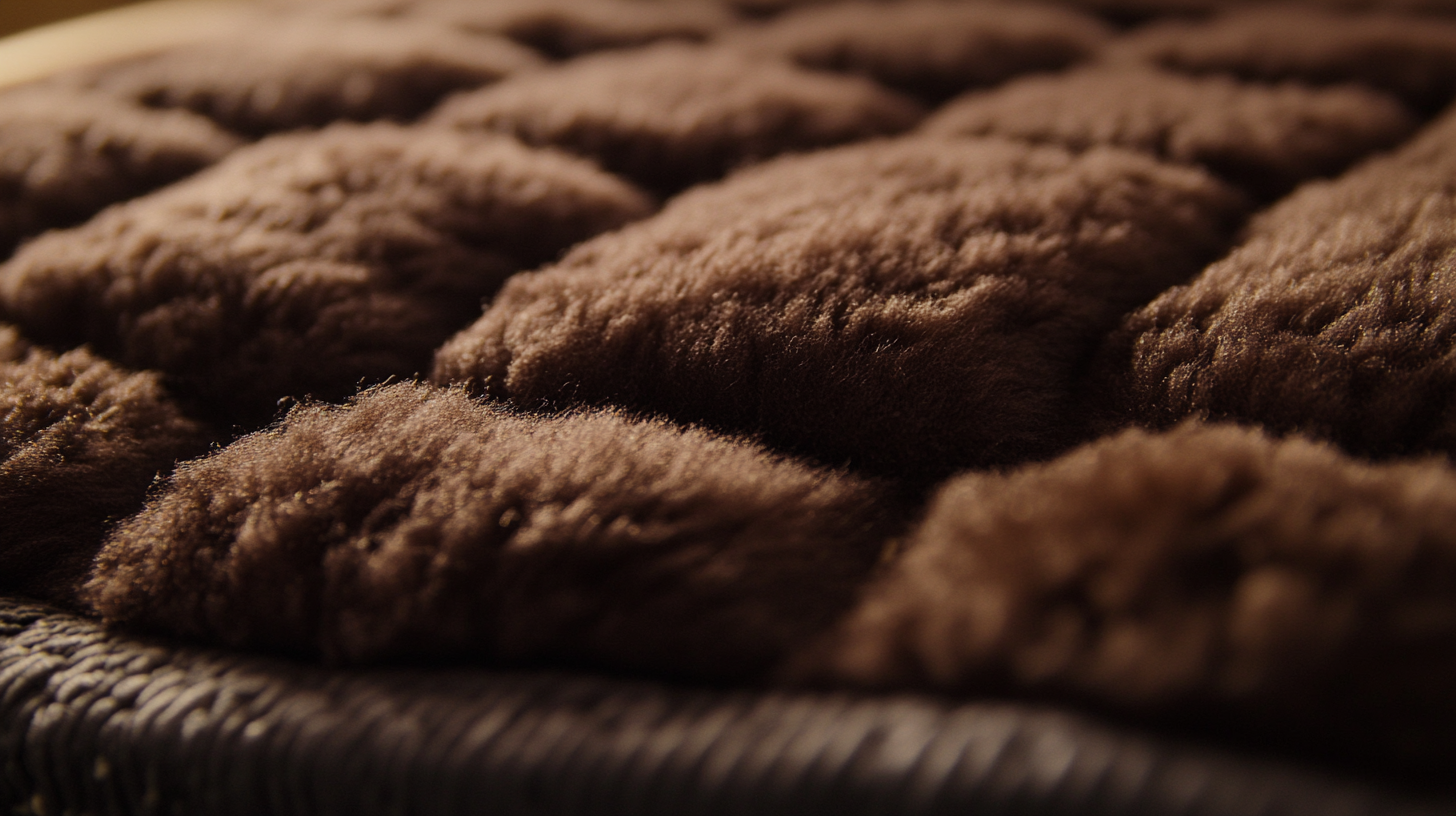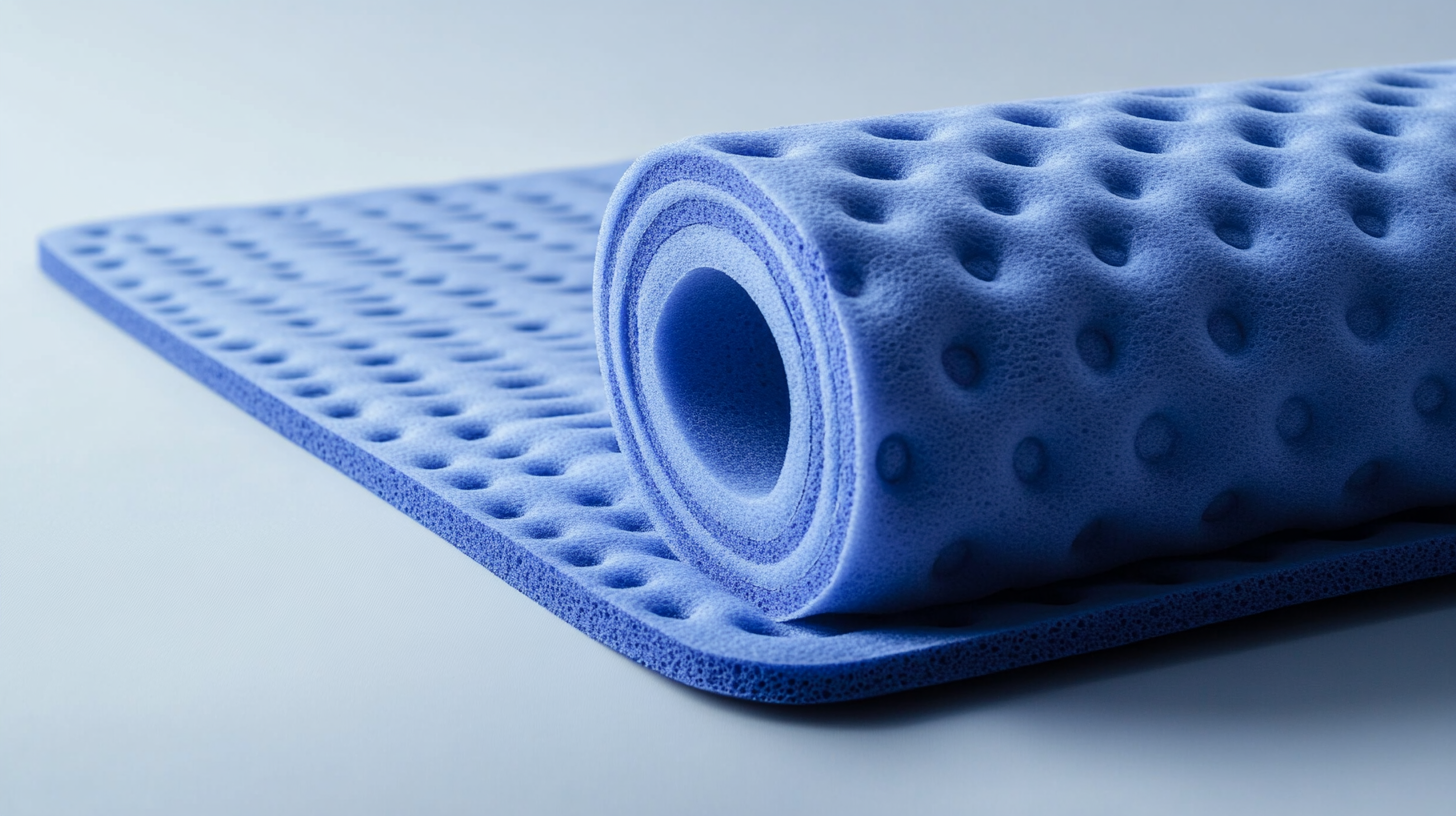As we approach 2025, the market for home and fitness products is evolving rapidly, with the global foam mats market projected to reach $3 billion by 2025, driven by increasing demand for comfort and versatility in various applications. Among the many options available, the Plush Foam Mat stands out as the ultimate choice for consumers seeking unparalleled comfort and practicality. Its unique construction provides exceptional cushioning, making it ideal for activities ranging from yoga and workouts to play areas for children. Industry reports indicate that 63% of consumers prioritize material quality and comfort, highlighting the increasing awareness of how the right flooring solutions can enhance well-being and safety. As we explore what makes the Plush Foam Mat a top contender in the market, we will delve into the latest technology trends and successful strategies that manufacturers are employing to meet these growing demands.

 When it comes to plush foam mats, the quality of materials used significantly influences comfort and durability. According to a report by the International Association for the Study of Pain (IASP), high-density foam materials provide superior support by effectively distributing body weight, which can reduce the risk of pressure sores and discomfort. The ideal density for plush foam mats ranges between 3 to 5 pounds per cubic foot, allowing for optimal balance between softness and support, making these mats perfect for extended use, whether in a home gym or a child's play area.
When it comes to plush foam mats, the quality of materials used significantly influences comfort and durability. According to a report by the International Association for the Study of Pain (IASP), high-density foam materials provide superior support by effectively distributing body weight, which can reduce the risk of pressure sores and discomfort. The ideal density for plush foam mats ranges between 3 to 5 pounds per cubic foot, allowing for optimal balance between softness and support, making these mats perfect for extended use, whether in a home gym or a child's play area.
Additionally, the type of foam—such as memory foam or high-resilience foam—can affect both user experience and the longevity of the product. Research from the Consumer Product Safety Commission (CPSC) indicates that memory foam can adapt to an individual's body shape, thereby enhancing comfort levels and promoting better posture during exercises or lounging. Moreover, mats that incorporate certified materials, such as CertiPUR-US® foam, not only guarantee the absence of harmful chemicals but also ensure that users breathe easy while enjoying the soft, supportive surface. The importance of material quality cannot be overstated, as it directly correlates with both health benefits and overall user satisfaction.
When it comes to choosing the best plush foam mat, two critical aspects stand out: thickness and density of the foam. Industry studies suggest that the optimal thickness for foam mats typically ranges from 1 to 3 inches, offering a perfect balance between cushioning and support. According to a report by the International Journal of Ergonomics, thicker mats can significantly reduce pressure on joints, making them ideal for activities like yoga or home workouts. A thickness of around 2.5 inches allows for a comfortable surface that absorbs impact while providing stability.
Density is another vital factor that contributes to the comfort and durability of foam mats. High-density foam (around 4-5 pounds per cubic foot) is noted for its ability to withstand prolonged use without losing its shape. Research by the Furniture Research Journal indicates that mats with higher density not only provide superior support but also enhance longevity, making them a cost-effective choice in the long run. The combination of adequate thickness and optimal density ensures that users experience maximum comfort, making plush foam mats the ultimate choice for versatile applications, whether for exercise, relaxation, or play.
| Feature | Description | Importance |
|---|---|---|
| Thickness | Typically ranges between 0.5 to 1 inch, providing comfort and support. | A thicker mat offers better cushioning, reducing strain on joints. |
| Density | Measured in pounds per cubic foot (PCF); higher density foam provides more support. | Higher density offers durability and retains shape over time. |
| Material | Common materials include memory foam and polyurethane foam. | Material type affects comfort, breathability, and longevity of the mat. |
| Surface Texture | Can be smooth or textured; textured surfaces provide better grip. | A good surface texture enhances safety during use. |
| Weight | Weight varies from 3 to 10 pounds depending on size and material. | Weight impacts portability and ease of use. |
When it comes to home decor, versatility is key, and plush foam mats deliver just that. These mats are not only designed for comfort but also come in a variety of colors, patterns, and textures, making them suitable for different spaces. Whether you’re looking to create a cozy reading nook in your living room or a safe play area for children, plush foam mats effortlessly adapt to enhance the aesthetic and functionality of any room.
Beyond aesthetics, these mats serve various practical purposes. In entryways, they provide a soft landing spot for tired feet after a long day. In fitness spaces, they offer cushioning during workouts, allowing for a comfortable exercise experience. Their lightweight nature makes them easy to rearrange, while their durable composition ensures they withstand the hustle and bustle of everyday life. The ability to combine style with practicality makes plush foam mats an ultimate choice for anyone seeking to elevate their living environment.
This bar chart illustrates key features of the best plush foam mats. It highlights the thickness, density, durability, and versatility based on real measurements, showcasing why these mats are an ultimate choice for comfort and adaptability in various spaces.
When considering the comfort and versatility of plush foam mats, it's crucial to address a common concern: durability and maintenance. Many users encounter issues with foam mats losing their shape or becoming worn over time. According to a recent report by the National Institute of Standards and Technology (NIST), high-quality foam mats should maintain at least 80% of their original shape after 300,000 compressions, highlighting the importance of selecting mats made from premium materials.
Furthermore, maintenance is another crucial aspect that affects both the lifespan and hygiene of foam mats. A study published in the Journal of Indoor Quality showed that foam mats, if not properly cleaned, can harbor bacteria and allergens, leading to potential health issues. It's recommended that users clean their mats regularly using gentle, non-toxic cleaners to prevent degradation of the foam and ensure a safe environment. By understanding these durability and maintenance concerns, consumers can make informed choices that enhance their comfort experience while minimizing hassles associated with foam mat upkeep.
When selecting the right plush foam mat, it's essential to consider the density and thickness of the foam, as these factors significantly impact comfort and support. A study by the International Journal of Ergonomics indicates that materials with a density of 4-5 pounds per cubic foot provide the optimal balance between support and plushness for extended comfort (Ergonomics, 2022). Additionally, thickness should range from 1 to 3 inches, depending on your intended use—thicker mats are ideal for high-impact activities, while thinner options are better suited for yoga or light exercises.

Another critical aspect to consider is the mat’s surface material. For instance, mats made from high-quality EVA foam are recognized for their durability and moisture resistance, making them perfect for both indoor and outdoor use. According to market research by IBISWorld, the demand for versatile foam mats has surged by 15% over the past year, emphasizing the trend towards multifunctional home fitness solutions. When choosing a plush foam mat, look for non-toxic materials and easy-to-clean surfaces to ensure safety and maintenance convenience, particularly for households with children or pets.
